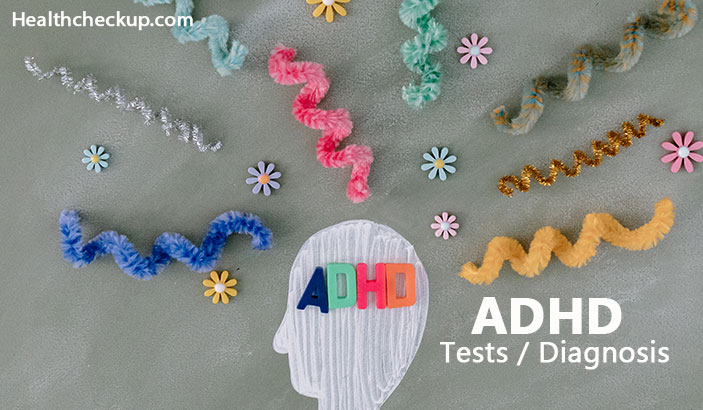Introduction
Attention Deficit Hyperactivity Disorder is a general neurological condition. It is a chronic disease first diagnosed in childhood and may often persist to adulthood in many children. It affects millions of children in a year and many adults. The symptoms can be diagnosed as early as three years of age. The average age at which early signs are observed is five. It was known as ADD (attention deficit disorder) earlier but was officially changed to ADHD in the 1990s; however, some people still use both names to talk about this disorder.
Symptoms
The primary symptoms of ADHD include inattentiveness, hyperactivity and impulsivity in childhood. However, the symptoms of ADHD may differ from person to person and tends to change with age. Also, not all the signs are found in a single child. Instead, they might have one or two symptoms prominent based on which the ADHD is characterized in 3 categories which are:
- Inattentive ADHD: A child with inattentive ADHD is easily distracted, doesn’t seems to be listening, doesn’t follow instructions, has problems in finishing and organizing daily tasks, doesn’t like to do things that require sitting still may trend to daydream and makes careless mistakes without thinking about circumstances and often loses things.
- Hyperactive-Impulsive ADHD: The child with hyperactive-impulsive ADHD talks excessively, is always restless and moving, doesn’t stay seated and is always on the go running or climbing on things, often squirms, fidgets and has trouble playing quietly. The child has trouble waiting for their turns and interrupts others and blurts out answers all the time
- Combined ADHD: Combined ADHD includes the symptoms of both Inattentive and Hyperactive impulsive ADHD in a single child.
The symptoms in adults include anxiety, problems at controlling anger, easily frustrated, bored, depression, mood swings, relationship problems, problems at work, low self-esteem, impulsiveness, substance misuse and addictions, and forgetting things.
Tests/Diagnosis
ADHD is a brain disorder, and currently, there is no specific test for its diagnosis as the exact cause of this condition is still unknown. As a result, for the diagnosis of ADHD, the doctors mainly rely on psychological tests, questionnaires that measure the symptoms of ADHD, observing the child or adult, interviewing the parents, teachers, relatives, friends and other relatives.
The doctors will diagnose the disorder in a different setting, which are:
- Interviewing the parents: The diagnosis of ADHD starts from parents as they are the ones to notice the early symptoms of ADHD. Therefore, the doctor should seek information from the parents about when and where they observed the signs, the age the behaviour began, and the symptoms that the child shows.
- Interviewing the teachers, relatives and friends: The doctor will talk to the teachers about the child behaviour in class and how they are with other students, samples of school work, academic reports and report cards. In the case of adults, the doctor will talk to family members, spouses, work colleagues and friends.
- Other tests: The doctors may conduct the other tests like hearing and eyesight test, blood test and diagnosis of another disease, CT scan and MRI to check the brain abnormalities.
- Rating scales: The doctors might use the rating scales to evaluate and diagnose ADHD, for example
- The child attention profile: Teachers fill it out to track down symptoms and types of ADHD disorder.
- Conner’s rating scale: It includes questionnaires about things like behaviour at school, home, work and public places along with grades, relationships and many others.
- Behavior Assessment System for Children: This test is mainly carried out to look for things like hyperactivity, depression, anxiety, aggression, learning problems and conduct problems.
- The Vanderbilt assessment scale: It includes 55 questions assessment to review the symptoms of ADHD.
- Genetic history: The genetic history of both the parents is taken into consideration while diagnosis as sometimes child is seen affected by disorder when one of the parent has ADHD.
- Brain Wave tests: This test is carried out by an instrument called Neuropsychiatric ECG based assessment AID, also called NEBA. It is a scan that measures the brain waves and is approved for children ages 6 to 17. The ratio of certain brain waves tends to be higher in children and adults affected by ADHD.
- APA guidelines: The APA stands for American Psychiatric Associations, which set the guidelines for diagnosing ADHD. The doctors use the procedures set by APA according to which a person suffering from disorder must have at least 6 out of the following symptoms set for Inattentive and Hyperactive impulsive type. Once the disorder is diagnosed, the doctors proceed with behavioural therapy and medication which helps in bringing relief from the condition.

Rohit Jain is an IPR Specialist and Medical Content Writing Expert. For over a decade, he has written several articles in the areas of female infertility, Erectile dysfunction, hemangioma, cervical cancer, monoclonal gammopathy of undetermined significance, mononucleosis, mitral valve disorder, nerve sheath tumor, shin splints, mild cognitive impairment, cellulitis, brain metastases, atelectasis, MCAD deficiency, lymphoma, sepsis, cardiac rehabilitation and metabolic disorder among others.








